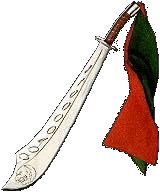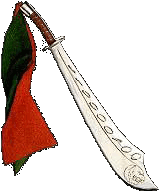

Free
Kung Fu Lessons

Animals

Tiger

Dragon

Crane
A Quick History of Kung Fu
First of all, the term "Kung " means "Accomplishment", and "Fu" means "Great Effort". Under this definition, Kung Fu is "Accomplishment through great effort." Using this definition, Michaelangelo had Kung Fu in art... Beethoven and Mozart had Kung Fu in Music... Mohammad Ali had Kung Fu in Western Boxing... etc.
Technically, martial arts began back in prehistoric times (before recorded history). Primitive humans had to survive the wild (nature as well as animals) as well as combat different tribes of humans. From these battles, experience accumulated and techniques/tactics were developed and passed on to descendants and their descendants, etc. Later, weapons were discovered; crude clubs, poles, and spears, which began the next evolution of martial arts.
When metal weapons were developed, then next stage of martial arts appeared. With this, new and even more refined techniques were born until eventually many different styles of using the same type of weapon formed schools of martial study. These first martial art schools not only focused on weapons but utilizing one's own body as a weapon.
The first of these schools, as most experts will attest to, is the original Shaolin Temple in China. Originally built in 495 A.D. as a temple for Buddhist monks to live and study scrolls and straws, the Shoaling Temple was a haven for traveling Buddhist monks from India (where Buddhism originated). In 527 A.D., the Indian monk, Da Mo (also known as Bodhidharma) visited the Emperor of China. Da Mo was considered by many to have been a bodhisattva (an enlightened one who renounced Nirvana in order to save others). When the emperor decided he did not like Da Mo's Buddhist theories (he was not known to be the most personable monk), Da Mo sought out the Shaolin Temple.
When he arrived, the discovery that the resident monks were sickly and physically weak shocked him. Whether he was forbidden admittance to the temple or if he left of his own will is still disputed, but after this, Da Mo secluded himself in a cave (facing a wall) for nine years pondering the physical ailments of the monks.
Upon emerging from his self-imposed seclusion, he orally transmitted two Chinese classics (which were thereby recorded in writing by the Shaolin monks): The Yin Jin Jing (Muscle/Tendon Changing Classic) and the Xi Sui Jin (Marrow/Brain Washing Classic). These masterpieces on strengthening body, mind and spirit...and the cultivation of Chi (see section on "Chi") began the metamorphosis of the Shaolin Temple from exclusively the study of Buddhism to adding martial techniques.
The increase in external and internal power encouraged the monks to delve deeper into its special characteristics in order to develop ways to apply it to self defense against thieves and robbers...which were commonplace during those times. Self defense was a necessity due to the fact that monks traveled far from their temples to preach, help people and get necessary supplies. Although the monks still focused primarily on the study of Buddhism and spiritual cultivation; the learning of martial techniques were incorporated into their trainees.
Although it is known that some forms of "Chinese Boxing" did exist in China before Da Mo's arrival, specific records that detail just how systematized they were have yet to be unearthed. Yet it is known that Da Mo's teachings were absorbed, enriched, and refined by succeeding generations of masters to become the powerful and graceful Shaolin Temple boxing...also referred to as Shaolin Ch'uan (Shaolin Fist) or Shaolin Ch'uan Fa (Way of the Shaolin Fist).
While Da Mo did systematize a training regimen for the Shaolin monks, this was not his primary concern. Apparently his primary focus was the cultivation of Chi (Please refer to the section entitled "Chi").
Nearly 800 years after Da Mo's death, three monks of the Shaolin Temple unveiled a 170-movement system which was subdivided into five animal styles-Crane, Dragon, Leopard, Snake, and Tiger. This style was known as the "Five Animal Style," and complimented each other each with a different emphasis and approach.
The Crane, based on exercises to strengthen the sinews, stresses balance and quick footwork; the mystical and highly revered Dragon, utilizing exercises to cultivate the spirit, stresses flexibility and graceful movements. The Leopard develops power and speed, while the Tiger is a clawing style built on exercises for strengthening the bones. Finally, the Snake completed the system with it's exercises for Chi (Internal Power) and it's concern with pin-point hitting of vital spots.
Throughout the succeeding generations, many other animal-based styles were created. Among them are the Eagle Claw, Monkey, and Bear. Although the most prominent of these later animal styles was based upon the insect, the Praying Mantis.
The Praying Mantis has become the most revered insect in all of Chinese martial arts. It's front legs seemingly folded in prayer, suggesting religiousness, does not appear to be the main reason. Instead, it seems the Praying Mantis is surprisingly revered due to it's ferocity and tenacity, as discovered by a martial artist (about 350 years ago) named Wang Lang. Wang Lang developed the style by studying the a life or death battle between a Praying Mantis and a cicada. Upon it's victory, the mantis devoured its opponent. Wang captured the victor and studied its offense and defense by prodding it with straw. After a time, the Praying Mantis style was born.
Later, in 1928, the Nan King Central Kuo Su Institute was formed in Nan King, China. Its purpose was to consolidate Chinese martial arts under one organization. Overcoming ages of prejudices, the grand masters developed a new style, containing elements from many divisions of Northern style Chinese martial arts. This style came to commonly be known as Long Fist.
Style
Information
Philosophy of style
Home
History
Chi Gong

Mantis

Snake
References
utilized:
"Shaolin Long Fist Kung Fu" by Yang Jwing-Ming and
Jefferey A. Bolt
"Kung Fu: History, Philosophy and Technique" by David Chow and Richard Spangler.
"A Brief History of Chinese Martial Arts" by Dr. Yang
Jwing-Ming.
http://panda.bg.univ.gda.pl/~kwachu/YMAA/MA_HISTORY.html